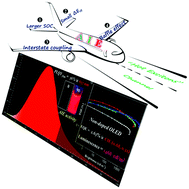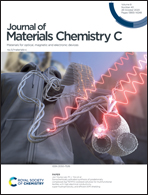Delicate modulation of triplet energy levels for activating “hot excitons” channels in deep red AIEgens†
Abstract
The “hot excitons” (HE) concept has played an important role in developing high-performance and stable emitting devices with low-efficiency roll-off; however, to date, reports about how to activate the HE process by systematic molecular structure regulation have been rare. Herein, four naphthothiadiazole-based deep red (DR) emitters with aggregation-induced emission (AIE)-activity are employed as model compounds to reveal referenced structure–property rules in excited states containing large energy level differences between T2 and T1 levels (ΔT2T1), small energy splits (ΔEst) and large spin–orbit coupling (SOC), and effective interstate coupling between S1 and S2. These rules are presented as “Three Golden Principles” because of their acceleration effect in improving emissive exciton transformation from high-level triplet excitons by activating the upper reversed intersystem crossing (uRISC) channel. A series of spectral measurements and the establishment of the theoretical model were achieved, which have an important guiding significance in designing HE-based organic light-emitting diodes (OLED) with high performance and stable roll-off.



 Please wait while we load your content...
Please wait while we load your content...